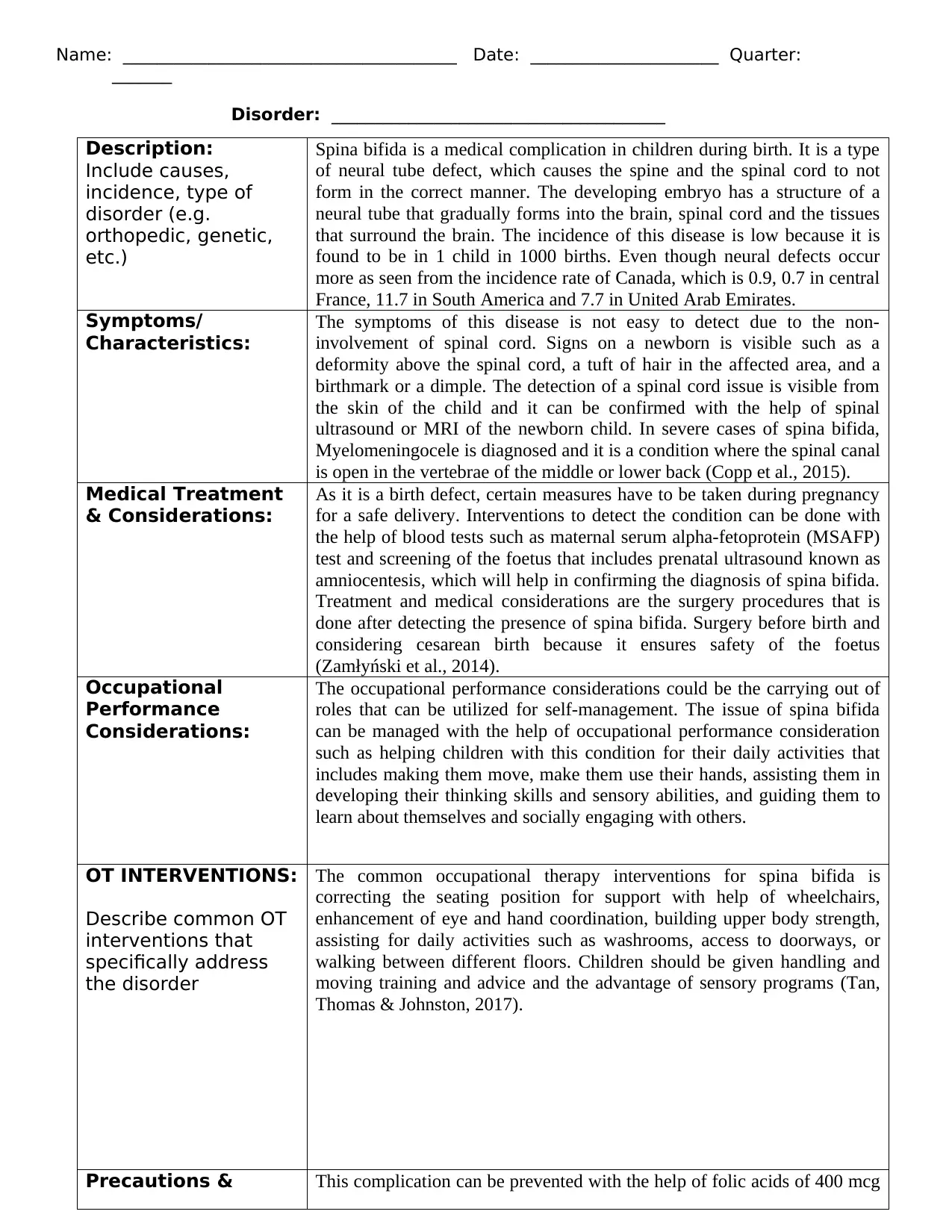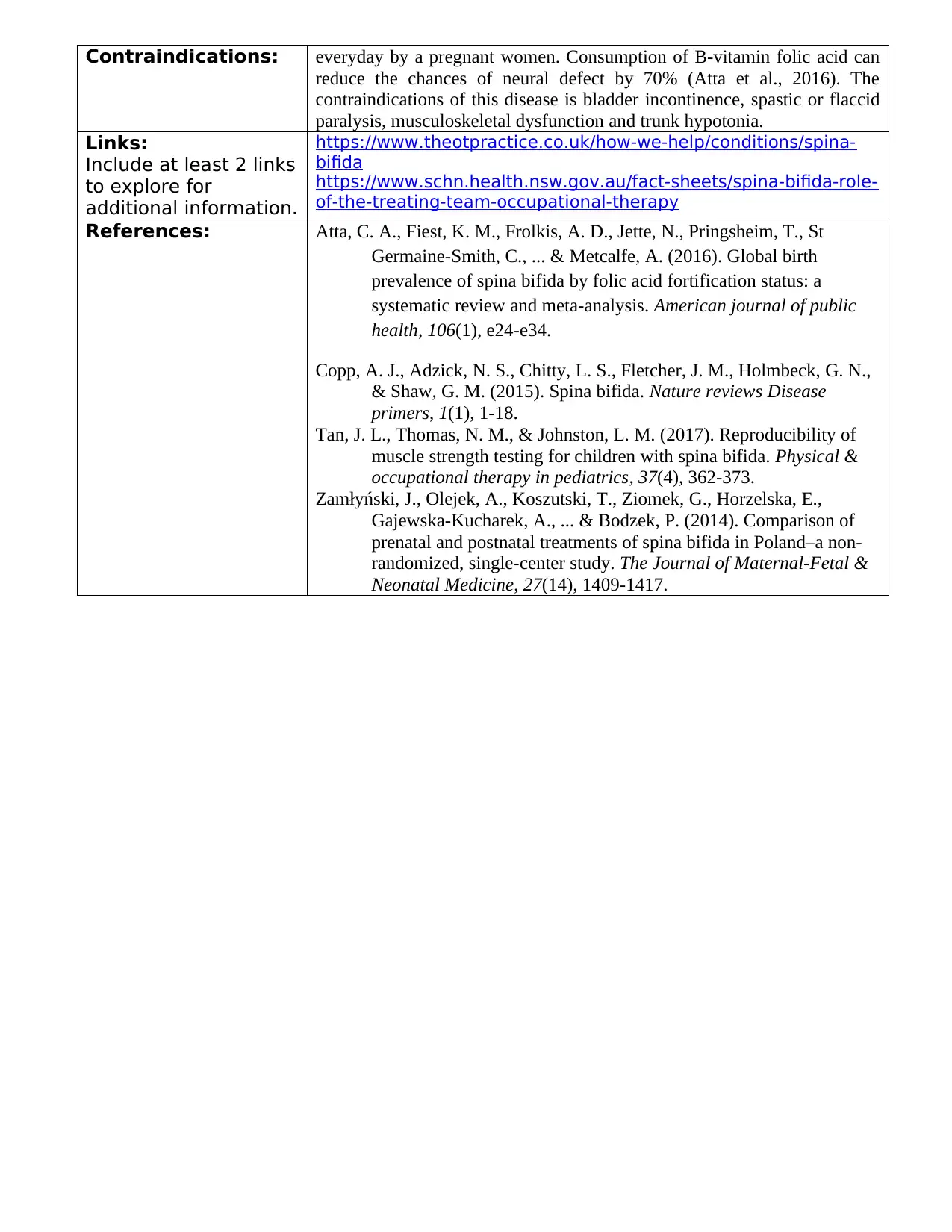Detailed Analysis of Spina Bifida: Treatment and Interventions
VerifiedAdded on 2022/08/12
|2
|871
|14
Homework Assignment
AI Summary
This assignment examines spina bifida, a birth defect characterized by incomplete closure of the spine and spinal cord during fetal development. It explores the causes, incidence rates, and various types of the disorder, including neural tube defects. The assignment details the symptoms, which can range from visible deformities to spinal cord issues detectable through imaging. It covers medical treatments, including prenatal interventions like blood tests and ultrasound, as well as surgical procedures. Occupational performance considerations are discussed, emphasizing the role of occupational therapy in helping children with spina bifida manage daily activities, develop skills, and engage socially. The assignment highlights common OT interventions such as correcting seating positions, enhancing hand-eye coordination, building upper body strength, and providing training for daily tasks. Precautions, contraindications, and the importance of folic acid for prevention are also included, along with links to additional resources and a list of relevant references.
1 out of 2



![[object Object]](/_next/static/media/star-bottom.7253800d.svg)